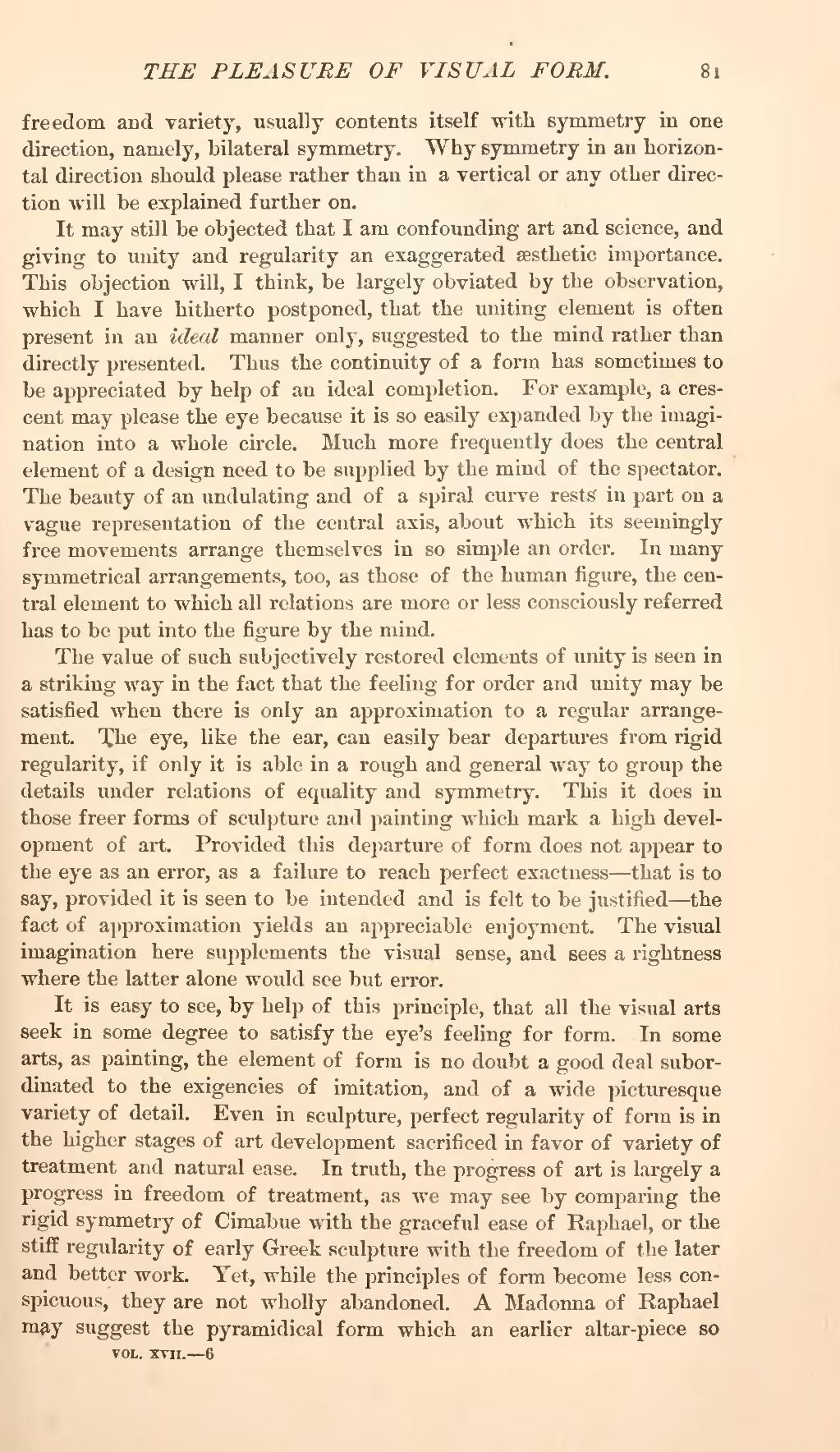freedom and variety, usually contents itself with symmetry in one direction, namely, bilateral symmetry. Why symmetry in an horizontal direction should please rather than in a vertical or any other direction will be explained further on.
It may still be objected that I am confounding art and science, and giving to unity and regularity an exaggerated æsthetic importance. This objection will, I think, be largely obviated by the observation, which I have hitherto postponed, that the uniting element is often present in an ideal manner only, suggested to the mind rather than directly presented. Thus the continuity of a form has sometimes to be appreciated by help of an ideal completion. For example, a crescent may please the eye because it is so easily expanded by the imagination into a whole circle. Much more frequently does the central element of a design need to be supplied by the mind of the spectator. The beauty of an undulating and of a spiral curve rests' in part on a vague representation of the central axis, about which its seemingly free movements arrange themselves in so simple an order. In many symmetrical arrangements, too, as those of the human figure, the central element to which all relations are more or less consciously referred has to be put into the figure by the mind.
The value of such subjectively restored elements of unity is seen in a striking way in the fact that the feeling for order and unity may be satisfied when there is only an approximation to a regular arrangement. The eye, like the ear, can easily bear departures from rigid regularity, if only it is able in a rough and general way to group the details under relations of equality and symmetry. This it does in those freer forms of sculpture and painting which mark a high development of art. Provided this departure of form does not appear to the eye as an error, as a failure to reach perfect exactness—that is to say, provided it is seen to be intended and is felt to be justified—the fact of approximation yields an appreciable enjoyment. The visual imagination here supplements the visual sense, and sees a rightness where the latter alone would see but error.
It is easy to see, by help of this principle, that all the visual arts seek in some degree to satisfy the eye's feeling for form. In some arts, as painting, the element of form is no doubt a good deal subordinated to the exigencies of imitation, and of a wide picturesque variety of detail. Even in sculpture, perfect regularity of form is in the higher stages of art development sacrificed in favor of variety of treatment and natural ease. In truth, the progress of art is largely a progress in freedom of treatment, as we may see by comparing the rigid symmetry of Cimabue with the graceful ease of Raphael, or the stiff regularity of early Greek sculpture with the freedom of the later and better work. Yet, while the principles of form become less conspicuous, they are not wholly abandoned. A Madonna of Raphael may suggest the pyramidical form which an earlier altar-piece so

